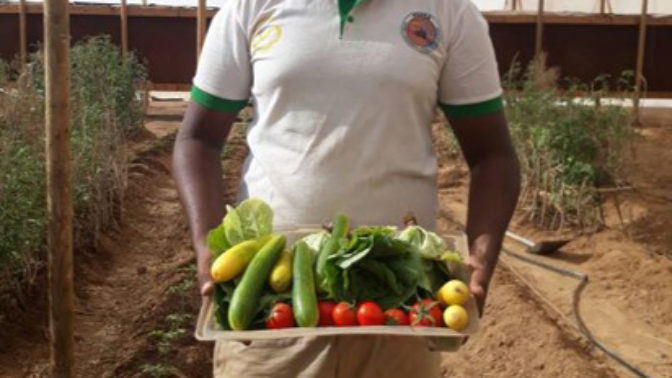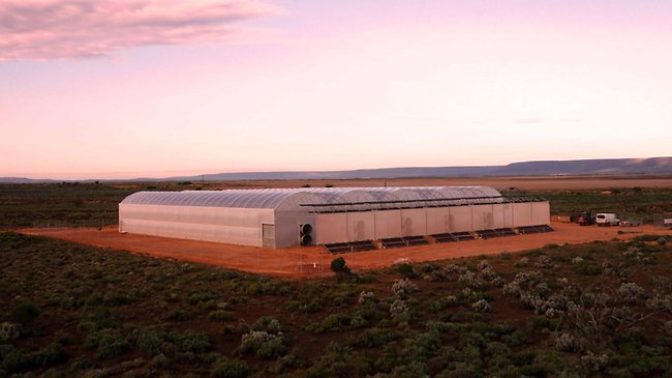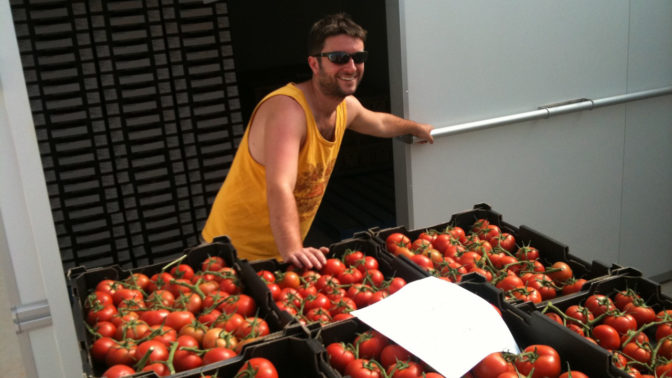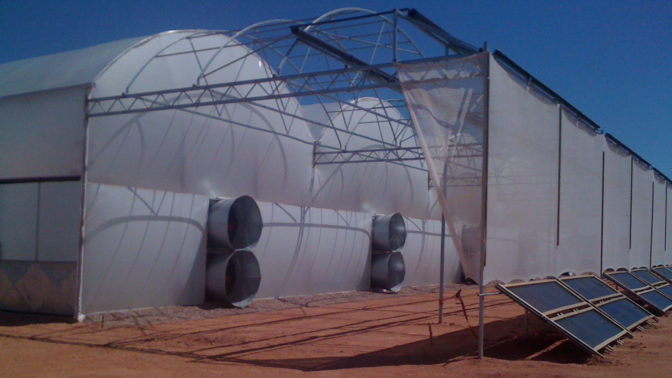Seawater Greenhouse
A Seawater Greenhouse enables the growth of crops in hot, arid regions, using seawater and solar energy.
Key Facts
- The Seawater Greenhouse is a ‘cool house’ with evaporative cooling raising the humidity in the growing environment, reducing the demand for fresh water by up to 10-fold.
- The technique involves pumping seawater (or allowing it to gravitate if below sea level) to an arid location and then subjecting it to two processes.
- The first process is to humidify and cool the air, and second, it is evaporated by solar heating and distilled to produce fresh water.
- The largest project is in Australia, which helps to produce 15% of the country’s demand for tomatoes.
- The seawater greenhouse is a response to the global water crisis.
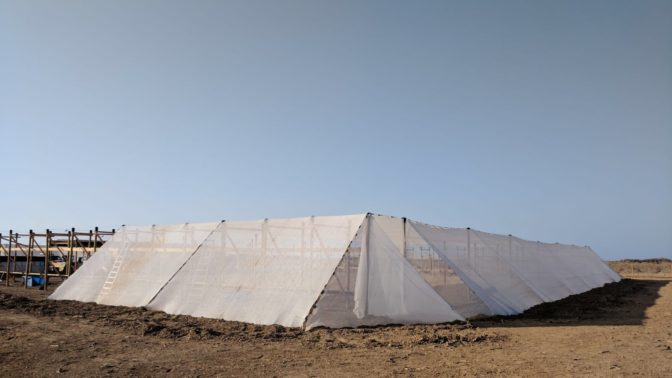
Key Features
A Seawater Greenhouse is a greenhouse structure that enables the growth of crops in hot, arid regions, using seawater and solar energy. While conventional greenhouses are also known as a ‘hot house’, the Seawater Greenhouse is a ‘cool house’. Evaporative cooling raises the humidity in the growing environment, reducing the demand for fresh water by up to 10-fold. Plants that are not stressed by excessive rates of transpiration grow faster and produce higher yields.
The technique involves pumping seawater (or allowing it to gravitate if below sea level) to an arid location and then subjecting it to two processes: first, it is used to humidify and cool the air, and second, it is evaporated by solar heating and distilled to produce fresh water. Evaporative cooling is driven either by the wind directly, or assisted with fans. The choice depends on the location and its wind regime. Finally, the remaining humidified air is expelled from the greenhouse and used to improve growing conditions for outdoor plants. The more concentrated salt water may either be further evaporated for the production of salt and other elements, or discharged back to the sea. The seawater greenhouse is a response to the global water crisis.
Social Impact
Drought, desertification, food shortages, famine, energy security, land use conflict, mass migration and economic collapse, climate change and CO2 sequestration are some of the issues that can be overcome by augmenting the supply of water.
The growth in demand for water and increasing shortages are two of the most predictable scenarios of the 21st century. Agriculture is the primary pressure point. A shortage of water will also affect the carbon cycle as shrinking forests reduce the rate of carbon capture, and disrupt the regulating influence that trees and vegetation have on our climate.
Fortunately, the world is not short of water, it is just in the wrong place and too salty. Converting seawater to fresh water in the right places offers the potential to solve all these problems.
Our largest project to date for Sundrop Farms in Australia is situated at the top of the Spencer Gulf where the sea meets the outback. There is no agriculture in the region owing to the scanty rainfall and excessive temperatures. It covers 20 hectares and employs 300 people. It produces 17,000 tons of tomatoes annually, meeting 15% of Australia’s demand.
Future Plans
We continue to seek, meet and fulfill opportunities in hot, arid regions of the world.
Main Target Group
Horticultural operations in Australia, Somaliland, Kenya, Colombia, and Saudi Arabia.
Main User
Farmers, communities and agricultural + academic research organisations.
Price (in USD)
Anything from $20/m² upwards.


